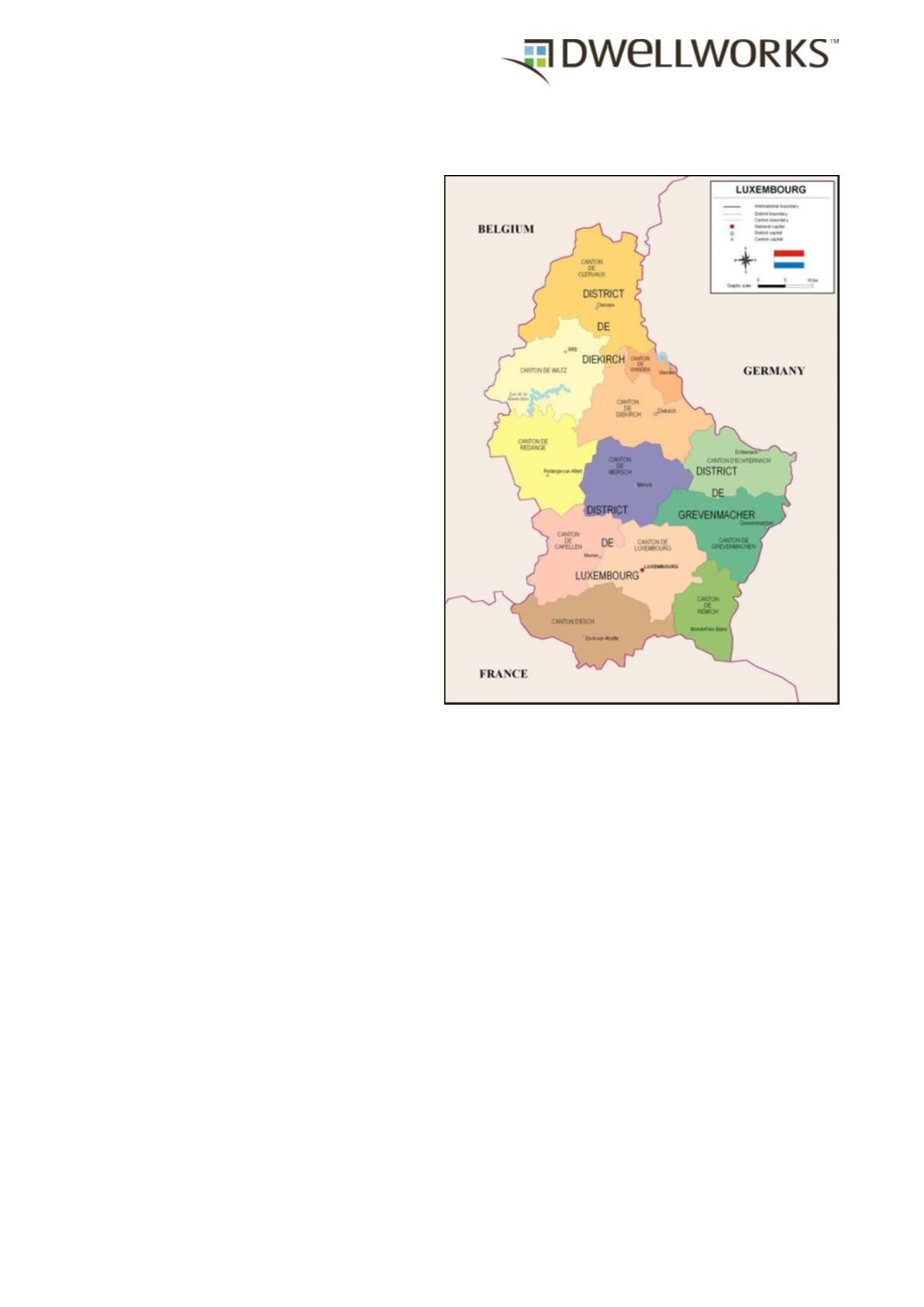

© 2016 Dwellworks
Page 7
Discovering Luxembourg
Geographic Overview
Luxembourg, which sits in central
Europe, borders Belgium to the
northwest, Germany to the east, and
France to the southwest. At 2,586 sq.
km., Luxembourg is one of the smallest
countries in Europe. The country is
divided into three districts with Diekirch in
the north, Luxembourg in the southwest,
and Grevenmacher in the southeast.
Most of northern Luxembourg is covered
in forests and dominated by hills and
small mountains as part of the Adrennes.
Southern Luxembourg is more densely
populated and sits on a large, sandstone
plateau while western Luxembourg has
uneven terrain and is part of the Moselle
River Valley.
Major Cities
Luxembourg City is the largest city in the
country with nearly 100,000 people. Many
of the surrounding suburbs have large
populations such as Esch-sur-Alzette and
Dudelange. In the district of Diekirch in
the north, Ettelbruck and Diekirch are the largest cities with over 6,000 residents each.
People and Culture
Demographics
Luxembourg has a population of approximately 562,000. The majority of Luxembourgers are
of Luxembourgish heritage with an influx of immigrants moving to the country in the past
century. Many residents of Luxembourg are of Belgian, Germany, French, or Portuguese
heritage. There is also a growing number of immigrants from eastern Europe, Bosnia and
Herzegovina, Serbia, and Montenegro. Today nearly 37% of the population is made of
immigrants. Other minorities include those of Romani (nomadic people) and Jewish heritage.
Language
Luxembourg has three official languages: French, German, and Luxembourgish.
Additionally, English is commonly spoken as a way of international communication.
Luxembourgish is at the heart of all communication between residents and it is most
commonly spoken in everyday life, but rarely written.











